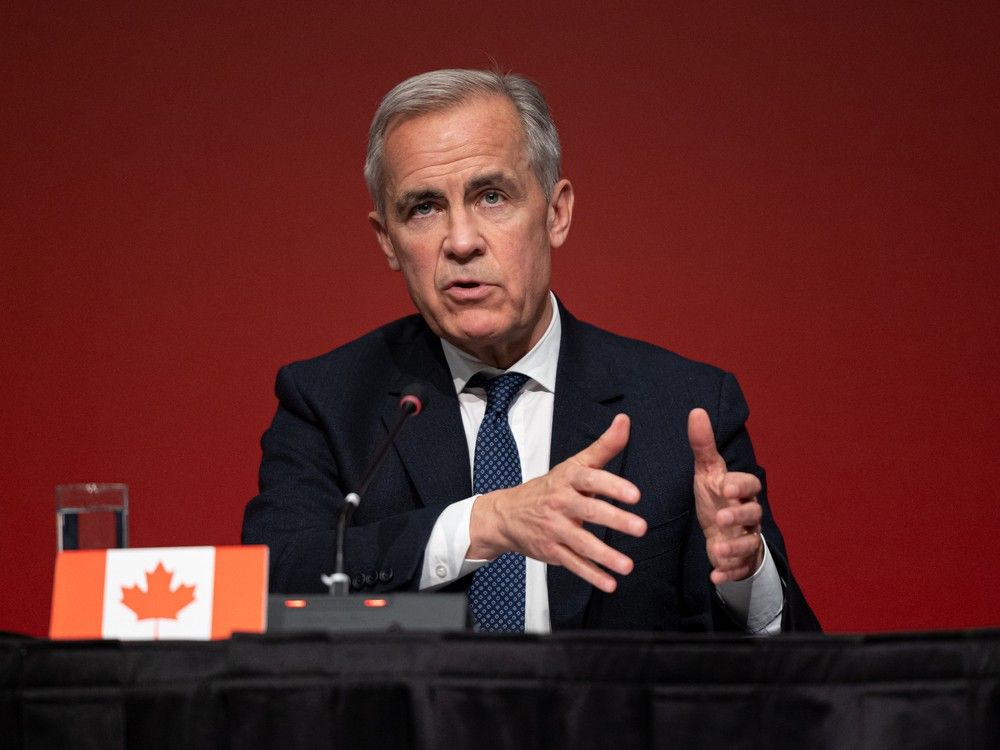Business
Canada Faces Food Security Challenge Amid TFW Program Changes

Canada’s food economy is at a critical crossroads as both the Liberal and Conservative parties propose significant changes to the Temporary Foreign Worker (TFW) Program. The contrasting approaches taken by these parties could have profound implications for grocery and restaurant prices across the country.
As of July 2025, youth unemployment among those aged 15 to 24 stands at 14.6 percent, marking the highest level since 2010 outside of the pandemic. Meanwhile, the youth employment rate has fallen to 53.6 percent, the lowest for non-pandemic years since 1998. Earlier this summer, students entering the job market faced even steeper challenges, with unemployment rates nearing 17-18 percent, a record high for that time of year.
Contrasting Plans for TFW Program
In response to these alarming statistics, Conservative leader Pierre Poilievre has proposed to abolish the TFW Program entirely. His plan suggests replacing it with a limited agricultural-only stream and phasing out other categories over five years. This approach aims to free up low-wage, labour-intensive jobs, such as those in harvesting or kitchen preparation, for Canadian youth. In theory, this could enhance job access and increase wages for younger workers.
However, the food sector operates on narrow profit margins. A sudden shift towards domestic labour could significantly increase operating costs for businesses. These costs would likely be transferred to consumers, resulting in higher prices at grocery stores and restaurants.
In contrast, the Liberal plan, advocated by former Bank of Canada Governor Mark Carney, focuses on reform rather than elimination. It proposes a cap to reduce the number of temporary residents, including workers and students, to below five percent of the population by 2027. The plan also aims to tighten eligibility requirements, permit lengths, and oversight of the program. Notably, agriculture and food processing are exempted from these restrictions, ensuring that farms and processors have access to the necessary labour.
Implications for Food Prices
The potential impact on food prices is stark. Should Poilievre’s model be implemented, Canadians can anticipate faster and sharper increases in costs for both food service and retail sectors. Restaurants may be compelled to raise wages to attract domestic workers, leading to menu prices rising more quickly than inflation. In addition, grocers may face increased wholesale costs as labour availability in farming and processing tightens.
On the other hand, the Liberal plan allows for a gradual adjustment, aiming to safeguard agricultural labour while curbing any misuse of the program. This strategy could help mitigate inflationary pressures in food pricing.
This debate raises an essential question for a country grappling with high youth unemployment and a food system that relies heavily on consistent labour: which policy best serves the public interest? While Poilievre’s proposal may resonate with those prioritizing job opportunities for Canadian youth, it risks destabilizing the food sector and undermining affordability.
Conversely, the Liberal reform plan, though not without its flaws, presents a more pragmatic balance. It seeks to reduce excesses while protecting critical supply chains, thereby keeping food prices as manageable as possible in an already volatile global environment.
Ultimately, the decision made by policymakers could have significant consequences for households already facing financial strain. The choice is not just whether Canadians will pay more for food, but how much more they will have to pay. One plan banks on an aggressive labour substitution to enhance youth employment prospects, while the other focuses on stability and gradual reform to maintain the integrity of the food system.
Sylvain Charlebois, director of the Agri-Food Analytics Lab at Dalhousie University, co-hosts The Food Professor Podcast and serves as a visiting scholar at McGill University. His insights highlight the complexities surrounding food security and the implications of policy changes in Canada.
-

 Education2 months ago
Education2 months agoBrandon University’s Failed $5 Million Project Sparks Oversight Review
-

 Lifestyle3 months ago
Lifestyle3 months agoWinnipeg Celebrates Culinary Creativity During Le Burger Week 2025
-

 Science3 months ago
Science3 months agoMicrosoft Confirms U.S. Law Overrules Canadian Data Sovereignty
-

 Health3 months ago
Health3 months agoMontreal’s Groupe Marcelle Leads Canadian Cosmetic Industry Growth
-

 Science3 months ago
Science3 months agoTech Innovator Amandipp Singh Transforms Hiring for Disabled
-

 Technology3 months ago
Technology3 months agoDragon Ball: Sparking! Zero Launching on Switch and Switch 2 This November
-

 Education3 months ago
Education3 months agoRed River College Launches New Programs to Address Industry Needs
-

 Technology3 months ago
Technology3 months agoGoogle Pixel 10 Pro Fold Specs Unveiled Ahead of Launch
-

 Technology1 month ago
Technology1 month agoDiscord Faces Serious Security Breach Affecting Millions
-

 Business2 months ago
Business2 months agoRocket Lab Reports Strong Q2 2025 Revenue Growth and Future Plans
-

 Science3 months ago
Science3 months agoChina’s Wukong Spacesuit Sets New Standard for AI in Space
-

 Education3 months ago
Education3 months agoAlberta Teachers’ Strike: Potential Impacts on Students and Families
-

 Technology3 months ago
Technology3 months agoWorld of Warcraft Players Buzz Over 19-Quest Bee Challenge
-

 Business3 months ago
Business3 months agoNew Estimates Reveal ChatGPT-5 Energy Use Could Soar
-

 Business3 months ago
Business3 months agoDawson City Residents Rally Around Buy Canadian Movement
-

 Education3 months ago
Education3 months agoNew SĆIȺNEW̱ SṮEȽIṮḴEȽ Elementary Opens in Langford for 2025/2026 Year
-

 Technology1 month ago
Technology1 month agoHuawei MatePad 12X Redefines Tablet Experience for Professionals
-

 Technology3 months ago
Technology3 months agoFuture Entertainment Launches DDoD with Gameplay Trailer Showcase
-

 Business3 months ago
Business3 months agoBNA Brewing to Open New Bowling Alley in Downtown Penticton
-

 Technology3 months ago
Technology3 months agoGlobal Launch of Ragnarok M: Classic Set for September 3, 2025
-

 Technology3 months ago
Technology3 months agoInnovative 140W GaN Travel Adapter Combines Power and Convenience
-

 Science3 months ago
Science3 months agoXi Labs Innovates with New AI Operating System Set for 2025 Launch
-

 Technology3 months ago
Technology3 months agoNew IDR01 Smart Ring Offers Advanced Sports Tracking for $169
-

 Technology3 months ago
Technology3 months agoDiscover the Relaxing Charm of Tiny Bookshop: A Cozy Gaming Escape










